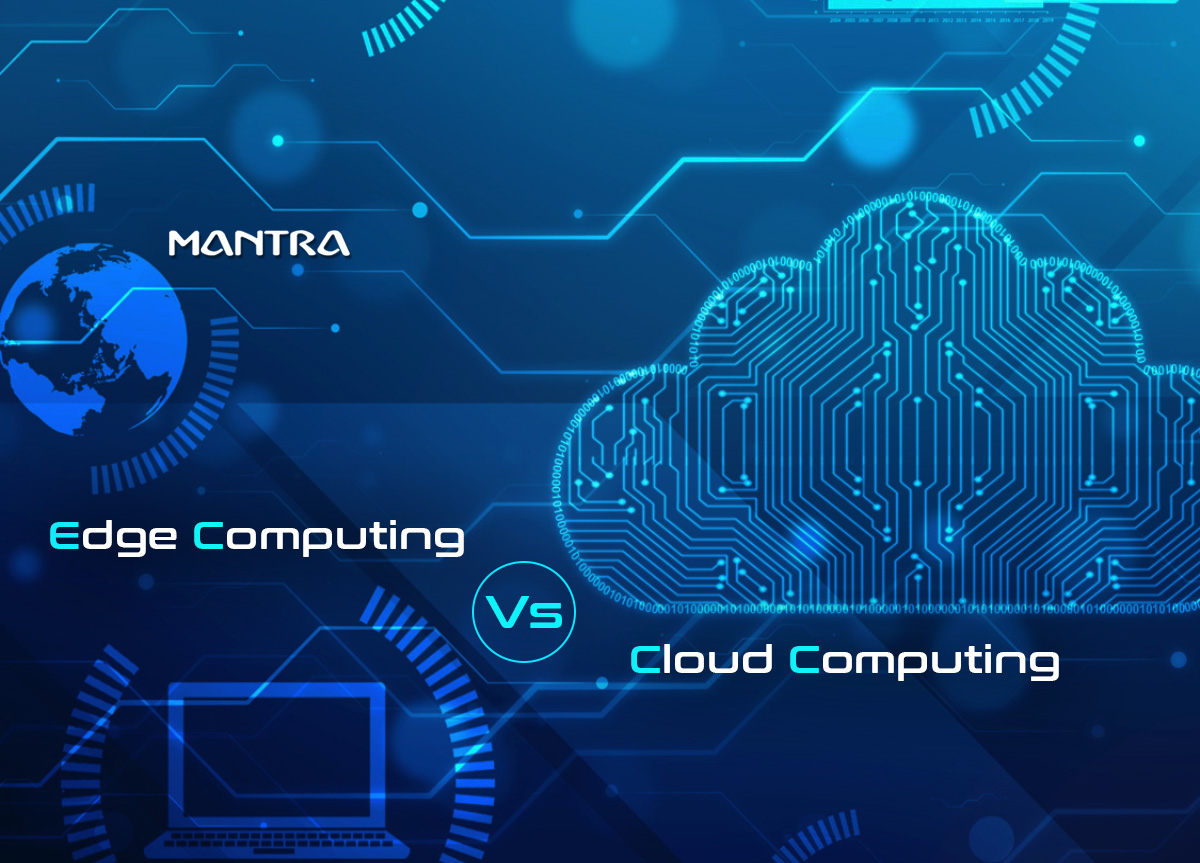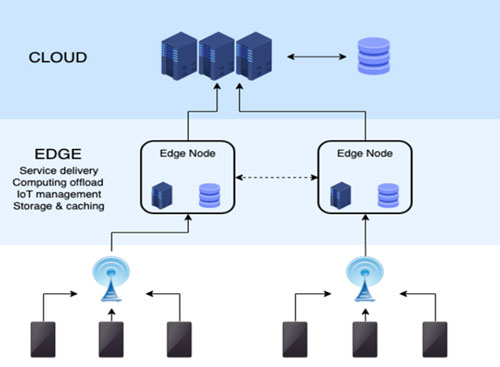
Today, the majority of organizations is relying on the "cloud" for storing large datasets. So the talk of the tech town is that Edge computing is going to replace Cloud computing because some predict that the cloud might go down due to some of its shortcomings. Before we talk about that, it's necessary to know that Edge does not replace Cloud, but instead complements it. Edge handles time-sensitive data, whereas the cloud does not. Let's get to know about cloud computing first.
What is Cloud computing?
You might have heard "cloud" being used as a metaphor for the' Internet' in your day to day life. Basically, Cloud is the delivery of computing services such as databases, storage, software over the Internet. Its primary function is to store data without the involvement of the user.
Cloud computing can be divided into three main services:
SaaS :- Software as a service: SaaS lets its users interact with the software set up on the cloud directly, rather than with the infrastructure where it runs. Oracle and SAP are some of the organizations using the SaaS service.
IaaS :- Infrastructure as a service: IaaS provides virtual computing resources and is the hardware that boosts the cloud. The Amazon Web Services (AWS) was the first provider of IaaS. Microsoft Azure, Google Cloud Platform, Digital Ocean are some of the widest used cloud platforms.
PaaS :- Platform as a Service: PaaS is a set of services that target developers, who can share tools and API's to boost their development, and deploy their applications.
Advantages of Cloud computing :-
Price :- The main benefit of using cloud computing is that it eradicates the capital expense of purchasing hardware and its deployment. It conserves electricity power and cooling and eliminates the need for the actual presence of the user.
Performance :- The largest cloud services are run on a worldwide network of secure data centers, which are updated frequently to the latest range of fast and efficient hardware. Hence, its performance is always at its peak.
Productivity :- Data centers require a lot of hardware set up, software patching, and many more time absorbing tasks, cloud computing eradicates the need for such chores.
Disadvantages of Cloud computing :-
Network connection dependency :- It requires an uninterrupted connection to the internet, to send or receive files. Losing a network connection even for a short moment may cause downtime.
Loss of control :- You will need to trust your data provider, for the security of your data both physically and online. With the increasing number of hacking cases, completely trusting the provider might get a little tricky. So, it is mandatory to cautiously select your service provider.
What is Edge computing?

Edge computing is a group of local mini data centers, that are created to take some burden off the cloud. It handles all the local computing tasks, instead of transferring it to the centralized data center several miles away. That does not mean cloud will disappear, it simply means the cloud will become more closely accessible to you. Microsoft, one of the leading market leaders in cloud computing has a ton of business offers related to the Edge. Furthermore, Amazon Web Services is also offering an Edge-based content delivery infrastructure.
Advantages of Edge computing :-
Reliable, uninterrupted connection :- In comparison to the cloud, it consumes very less bandwidth and works even when the connection to the cloud is low. Since it operates in conditions with limited connections, there is no harm done to any business operations. Edge computing allows IoT devices gather enormous amounts of actionable data. It's always connected and continuously generating data for future analysis, rather than waiting for the users to connect to the centralized cloud data centers with their devices.
Speed :- The principal benefit of edge computing is its increased network performance and reduced latency. By processing the data nearer to the source and focusing on the traffic, edge computing reduces the amount of data flow to and from the central network, thereby decreasing latency and increasing overall speed.
Low connectivity costs :- Edge computing follows the 'Divide & Conquer' rule, wherein it allows you to filter out sensitive data at the source rather than sending each and every data to the centralized data center. Lesser the transfer of sensitive data between the devices and the cloud, higher the security between you and the customers. Hence, through the reduced data transport and storage, IoT is achieved at a lesser cost.
Disadvantages of Edge computing :-
Poorly implemented system :- The system is rather poorly implemented making it vulnerable to hackers. With its dependence on small data centers and a widely distributed network, it will face a separate range of security concerns and will be prone to hacking attacks. Also, edge computing benefits specialized devices, which perform only specific and intelligent functions and can respond to only particular machines in a specific way. This becomes a major disadvantage for industries that require quick responses.
Storage :- It requires more hardware and large storage devices. Even though more compact storage devices are available now, it's still necessary to consider this factor when it comes to developing an IoT device.
In essence, Edge computing and cloud computing are two different technologies and cannot replace each other as mentioned earlier. With all its advantages and disadvantages, shifting towards edge computing is somewhat inevitable. With the world of technology, escalating tremendously each day, we might have to adopt edge computing to keep all the gazillion IoT devices connected. Even though several industries are implementing this technology, it cannot be said with affirmation that edge is the only solution for all the challenges faced by IT organizations today.
Mrilup Chandra
No comments
ReplyEdge Computing Technology
I enjoyed reading this article on edge computing versus cloud computing. It provided a straightforward comparison, making it easier to understand the benefits and trade-offs of each technology. Well worth a read!
Reply